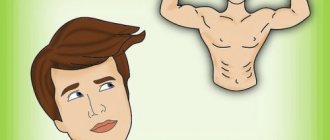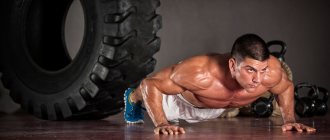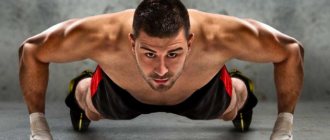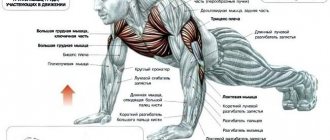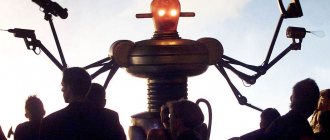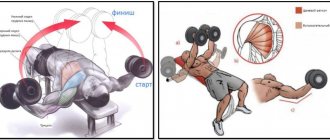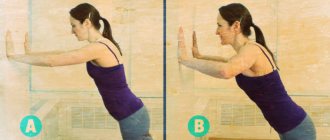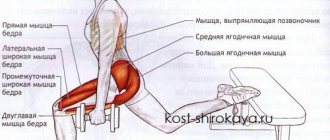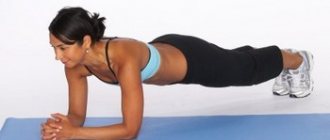In this article we will look at the types of push-ups used in martial arts.
A fighter must be well prepared physically, so push-ups are an integral part of training. When doing push-ups , the muscles that influence the force of the blow are well worked out. Push-ups also help strengthen the hands and fingers, which is very important for a fighter. Below we will look at the most popular types of push-ups in martial arts.
Treatise on Push-Ups (2011)
Push-ups are one of the simplest exercises for developing the muscles of the shoulder girdle, arms, back, abs, upper thigh muscles that connect to the trochanter of the hip joint, ankle joint, tendons of the arms, legs and fingers, and a bunch of other muscles that you don’t know about necessary.
This is also one of the most favorite exercises of the students of the Golden Dragon . Just look how they savor every movement, and they lie on the floor, not because they are tired, but because they enjoy the anticipation of the upcoming extension of their arms. Even the instructors don’t have such a love for these exercises. And now, a logical question - why do these exercises gain such great popular love? Perhaps it's all about the quality of execution ? Let's do a little experiment. I’ll now tell you how to do it right, and when you’re all alone at home, turn off the lights in the room, close the curtains, and try to do everything right.
To begin with, let's look at the initial position, which you should instantly fall into when you hear the commands - vertical fist, hands, fingers, etc. Your soft 'fifth place' needs to be kept level. It is impossible to bend in the lower back , as you hang the weight of the body, pelvis and hips on the spinal ligaments. The muscles do not hold in this position. This is harmful; sudden movement can result in pinched nerves or displacement of the vertebrae. It is also impossible to lift this place , since there is an uneven load on the arms and shoulders, and push-ups are mainly aimed at developing the arms and shoulder girdle. In short, you can’t do anything , you can only do it right, otherwise even in 100 years you won’t succeed. At the same time, the abs are in good shape, due to the association that you are holding.
Incorrect positions:
In the classic position, palms and feet are placed shoulder-width apart. There is an opinion, usually belonging to those who don’t really know how to do push-ups, that throwing one leg over the other improves the effect of the exercise. These are fitness show-offs . The leg stops working and uneven development occurs. The muscles that should be involved in the work are not involved. This leads to poor coordination. You can laugh out loud in the faces of those who say it's cool. This is not cool, this is a show off. Yo.
You can't do this:
Correct position:
The same push-ups can be performed in different ways. For example, with elbows apart and pressed . Both options are useful, they just work slightly different muscles. With the elbows pressed, the load goes more on the arms, and with the elbows apart, on the shoulders. It is also possible to perform with a narrow and wide hand position.
If you perform one set, for example, 50 times, then you develop strength . If you do 3 sets of 20 times, you train high-speed muscle contraction . Both options are useful, and neither of them should be neglected.
When doing push-ups, you need to breathe as follows: inhale as you lower, exhale as you lift. When exerting effort, you should always exhale.
At the beginning of the article, I listed what push-ups develop. But there are a huge variety of them, which have different features. During training, we do various variations of push-ups, but few people know how they differ and what they develop. I have selected several types of push-ups to talk about these features. At the end of the theoretical part there is a video that shows all the listed push-ups.
Classic push-ups on palms.
If you press your elbows, then the arm muscles work more clearly. If you do not press your elbows, but spread them, then the pectoral muscles and muscles of the shoulder girdle take on the load.
Push-ups on palms, fingers inward.
These push-ups are easier than the previous ones. When placing your hands shoulder-width apart or wider, the chest works more prominently. The upper press head is working. When the hands are positioned together, when the fingers are locked, the triceps work, the flexors and extensors of the forearm work equally. The lower back and delta are loaded.
Palms together.
With this position of the hands, the load goes to the triceps and latissimus dorsi.
Push-ups on fingers.
Isometric load on the forearm, load on the flexors and extensors of the fingers, on the tendons of the fingers. Isometric load, the heaviest stress for a person.
Vertical fist.
The wrist joint is greatly strengthened. The flexor and extensor muscles of the fingers work unilaterally. Works the triceps and slightly the chest.
From a vertical fist to a hand and back.
With these push-ups, the extensors additionally work, strengthening the wrist and the retaining ligament that surrounds it. The flexors work in semi-isometric mode.
Horizontal fist.
These push-ups involve a wide arm position. The emphasis must be placed on two joints (index and middle fingers). The chest is highlighted. There is a large load on the forearm and the wrist is strengthened.
Wrist push-ups.
Can be done with elbows together or apart. In the latter case, doing the exercise is more difficult. During these push-ups, the extensor muscles of the forearm are worked specifically. Reflexively, they try to straighten the hand.
On the hands, fingers to the sides.
The wrist is highlighted, the ligament surrounding the wrist is greatly strengthened. The triceps do not work much, it is unloaded due to the spread of the elbows. But the muscles of the forearm work actively.
Deep push-ups.
The triceps are loaded to the maximum. These are the most effective push-ups for him, as his maximum stretching occurs. Elbows should touch the floor, and you should rise without jerking.
On the palms with cotton.
These push-ups are necessary for training high-speed contraction of the muscles of the arms and shoulder girdle. You can be strong but slow. This power is of no use if you can't use it quickly.
Chinese push-ups.
All muscles work, both flexors and extensors. Dedicated load on the back and abs. Do not rest your elbows on the floor and do not bend them too much.
Transverse wave.
You need to do it one way and the other. Hands must be placed wide. Because of the positions you find yourself in, it's hard to find arm and shoulder muscles that aren't working.
Leopard fist, on the phalanges of the fingers.
Quadruple push-ups. The muscles of the forearm are highlighted. The retaining ligament surrounding the hand is strengthened. Push-ups can hurt your joints. To the joints, but not to you.
On the thumbs.
These push-ups should not be done without preparation, as you can very easily sprain your big, tender toes. These push-ups strengthen the joint ligaments and long tendons of the thumb.
On one hand, in the palm.
This is an advanced form of push-ups. Fully loads the muscles of the arms, shoulders and latissimus dorsi. This is the only form of push-ups that works the latissimus dorsi muscle so well.
Execution technique
Now, finally, let's move on to the finger push-up technique - carefully study the algorithm. This will save you from mistakes and help you learn quickly.
- Do a warm-up;
- Take the starting position - plank with outstretched arms, placing your hands on your hands, straight torso, looking forward;
- As you inhale, slowly lower yourself down, as in the classic variation of the exercise;
- As you exhale, rise up. Move smoothly;
- Do the required number of repetitions.
Preparing for the exercise
We mentioned above that finger push-ups are only available to experienced athletes or wrestlers with regular training. If you do not consider yourself to be in these two groups, you need to prepare.
Before we tell you how to do push-ups on your fingers correctly, we will discuss the preparatory process:
- Be sure to develop a simple warm-up routine that will sufficiently warm up the joints and ligaments of your fingers, hands, and forearms. Of course, you should also stretch your entire body - abs, arms, legs, core;
- Learn to perform classic push-ups in different techniques: narrow or wide grip, diamond, with clap. You must have fairly strong and developed triceps;
- Do a plank with your arms outstretched and your hands resting on your fingers. That is, take the starting position for push-ups on your fingers, but do not do push-ups. Strengthen your fingers by standing in this plank for a minute, two, three or more;
- Try standing first on five supports, then on four, three, two and even one.
- When you feel ready, you can move directly to push-ups.
These simple recommendations will tell you how to learn to do push-ups on your fingers from scratch in the shortest possible time. As you can see, the most important thing is to prepare the target muscles well.
What muscles are pumped?
With this type of push-up, the same group of muscles is worked as with the classic ones: triceps, muscles of the shoulder blades, shoulders and forearms, chest and deltas.
The main difference between classic push-ups and fist push-ups is that when push-ups in the second case, the effect in the form of muscle definition occurs faster.
Did you know? There are more than 640 muscles in the human body, with a quarter of them located on the face and neck.
